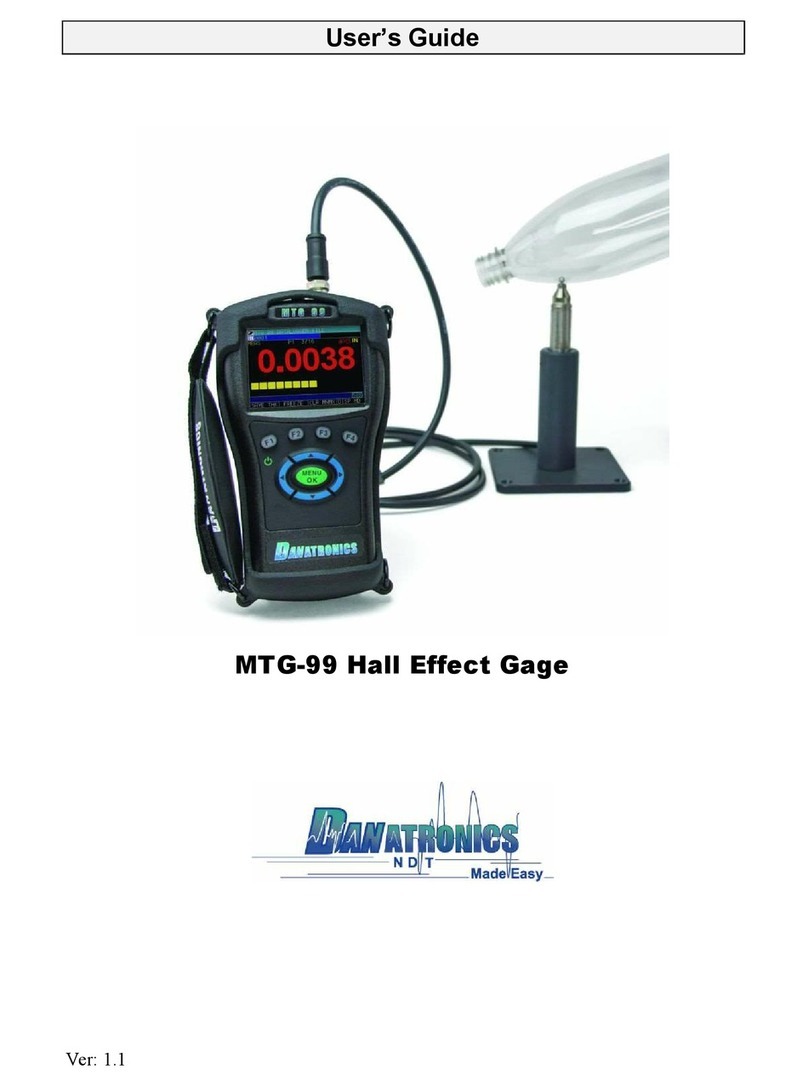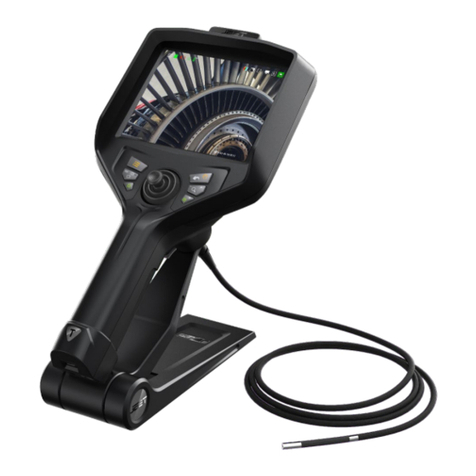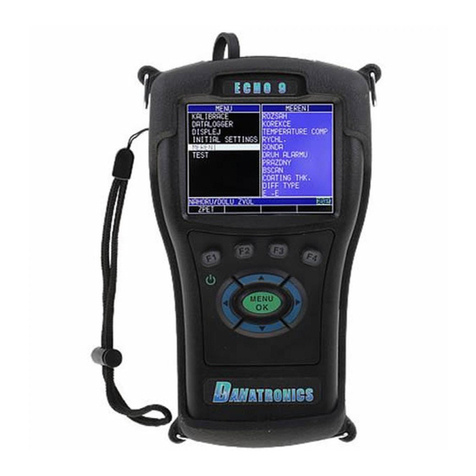
Ver: 2.0 7
a. Velocity Calibration Only
To perform a velocity calibration, press the Menu/OK key and scroll to calibration and press
Menu/OK
To perform a velocity calibration, While measuring the thickest piece of your test sample,
select F3 - VEL key. After pressing the F3 key, you can take the transducer off the test block.
If the displayed measurement is different than the known value of the step, use the up or
down arrow key to adjust the displayed value to the known value of the step. Press the
MENU/OK key to perform the calibration.
The unit will briefly display the calibrated velocity value in the top of the screen and then
return to Measure mode.
Cal screen for datalogger version
b. Zero Calibration Only
To perform a zero calibration, go to the Calibration mode as shown in part a. While
measuring the thinner step, press the F2 – Zero key. After selecting the F2 key you can take
the transducer off the test block. If the measured value is different than the known value of
the step, adjust the measured value by pressing up or down arrow keys. Press the MENU/OK
key to perform the calibration. The unit will briefly display the calibrated zero value in the top
of the screen and then return to Measure mode.
c. Velocity and Zero Calibration (Most accurate and recommended method)
To calibrate both velocity and zero at the same time, first go to the Calibration mode as
shown in part a.While measuring the thinnest step, press F2 – ZERO and then use the up or
down arrow keys to scroll through the thickness value number to the known thickness. Then
press the F1 - CAL key. While measuring the thickest step, press the F3 - VEL key after
which time you can take the transducer off the test block. If the displayed measurement is
different than the known value of the step, use the up or down arrow key to adjust the
displayed value to the known value of the step. Press the MENU/OK key to perform the
calibration. For a few seconds in the top left hand corner, the calculated acoustic sound
speed will be displayed.
Note:The order of Velocity and Zero calibration can be reversed. If Velocity calibration is
performed after Zero calibration, the calibrated velocity value will be displayed at the end of
the calibration process in the top left of the display.
Note:Once any of the above calibrations are performed, verify the accuracy of the readings
using the test step block.
5. Taking Measurements






























